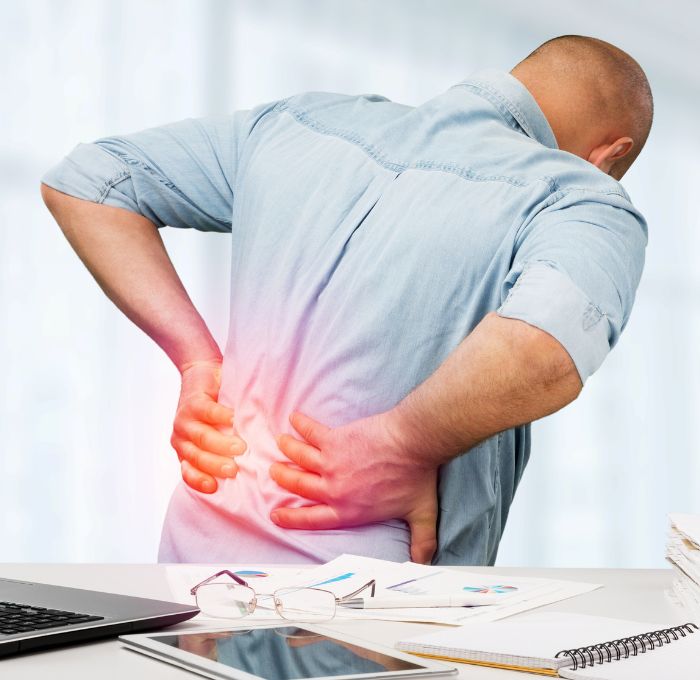Pain management is a crucial aspect of healthcare that addresses various types of pain, ranging from acute to chronic. Effective pain management is essential for improving the quality of life, enhancing mobility, and enabling individuals to perform daily activities without discomfort. This comprehensive guide explores various pain management strategies, focusing on both Ayurvedic approaches and modern techniques.

Understanding Pain
Types of Pain
- Acute Pain: Short-term pain resulting from injury, surgery, or illness. It typically subsides as the underlying cause heals.
- Chronic Pain: Long-term pain that persists for months or years, often resulting from conditions like arthritis, fibromyalgia, or neuropathy.
- Neuropathic Pain: Caused by damage to the nervous system, leading to sensations like burning, tingling, or shooting pain.
- Nociceptive Pain: Arises from tissue damage or inflammation, commonly experienced with injuries or inflammatory conditions.
Causes of Pain
Pain can be caused by a variety of factors, including physical injury, surgery, medical conditions, nerve damage, and inflammation. Psychological factors such as stress, anxiety, and depression can also contribute to the perception and severity of pain.
Modern Pain Management Techniques
Medications
- Analgesics: Over-the-counter pain relievers like acetaminophen and ibuprofen.
- Opioids: Prescription medications like morphine and oxycodone for severe pain.
- Antidepressants and Anticonvulsants: Used for neuropathic pain management.
Physical Therapy
Physical therapy involves exercises and techniques to improve mobility, strengthen muscles, and reduce pain. Therapists may use modalities like heat, cold, ultrasound, and electrical stimulation to enhance treatment outcomes.
Interventional Procedures
- Injections: Corticosteroid injections to reduce inflammation and pain.
- Nerve Blocks: Anesthetic injections to block pain signals from specific nerves.
- Radiofrequency Ablation: Uses heat to disrupt nerve signals and reduce pain.
Surgical Interventions
In severe cases, surgical procedures may be necessary to correct underlying issues causing pain, such as spinal surgery, joint replacement, or nerve decompression.

Ayurvedic Approaches to Pain Management
Ayurveda, the ancient Indian system of medicine, offers holistic and natural approaches to pain management, focusing on balancing the body’s energies and promoting overall health.
Ayurvedic Principles
According to Ayurveda, pain is caused by an imbalance in the body’s doshas: Vata, Pitta, and Kapha. Effective pain management involves restoring this balance through diet, lifestyle, and natural treatments.
Herbal Remedies
- Turmeric (Curcumin): Known for its anti-inflammatory and analgesic properties.
- Ashwagandha: Helps reduce inflammation and strengthen the body’s resilience to pain.
- Boswellia (Indian Frankincense): Reduces inflammation and pain, particularly in conditions like arthritis.
Ayurvedic Therapies
- Abhyanga (Massage Therapy): Involves the use of warm herbal oils to massage the body, reducing pain and improving circulation.
- Panchakarma: A detoxification and rejuvenation therapy that includes treatments like Virechana (purgation), Basti (enema), and Nasya (nasal administration of herbs).
- Kati Basti: A specialized treatment for lower back pain involving the application of warm herbal oil in a dough ring placed on the lower back.
Dietary and Lifestyle Recommendations
Ayurveda emphasizes a balanced diet and lifestyle to manage pain. This includes consuming anti-inflammatory foods, staying hydrated, practicing regular exercise, and incorporating stress-reducing practices like yoga and meditation.
Combining Modern and Ayurvedic Approaches
Integrating modern and Ayurvedic approaches can offer a comprehensive pain management plan that addresses both symptoms and underlying causes. Here are some ways to combine these approaches:
- Consultation with Healthcare Providers: Work with both conventional and Ayurvedic healthcare providers to create a personalized pain management plan.
- Complementary Therapies: Use Ayurvedic therapies like massage and herbal treatments alongside conventional medications and physical therapy.
- Lifestyle Modifications: Incorporate Ayurvedic dietary and lifestyle recommendations to support overall health and enhance the effectiveness of modern treatments.
Case Studies and Success Stories
Case Study 1: Managing Arthritis Pain
A 55-year-old woman with chronic arthritis pain found relief through a combination of Ayurvedic and modern treatments. She used prescribed anti-inflammatory medications and engaged in physical therapy exercises. Additionally, she incorporated Ayurvedic herbal supplements like turmeric and Boswellia into her routine. Regular Abhyanga massage sessions further helped reduce pain and improve mobility.
Case Study 2: Post-Surgical Pain Management
A 40-year-old man recovering from spinal surgery benefited from an integrated approach to pain management. Along with prescribed pain medications, he practiced yoga and meditation to reduce stress and promote healing. Ayurvedic therapies like Kati Basti were used to alleviate lower back pain and support recovery.
Conclusion
Effective pain management requires a comprehensive approach that addresses both the symptoms and underlying causes of pain. Modern techniques such as medications, physical therapy, and surgical interventions can be complemented by Ayurvedic therapies, herbal remedies, and lifestyle modifications. By integrating these approaches, individuals can achieve better pain relief, improved quality of life, and overall well-being.
For more information on Ayurvedic treatments and wellness tips, visit Lifewin.
